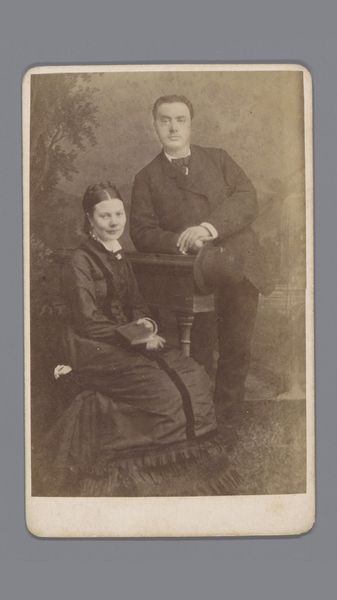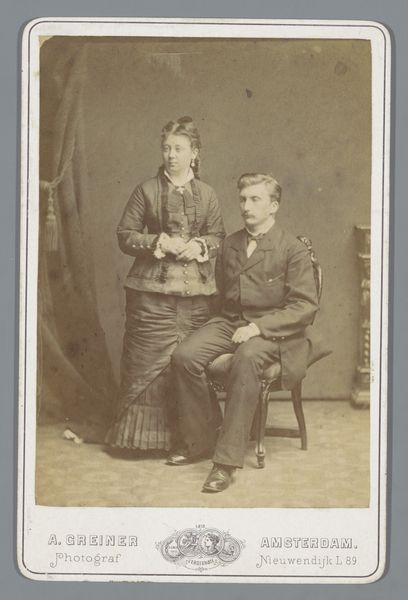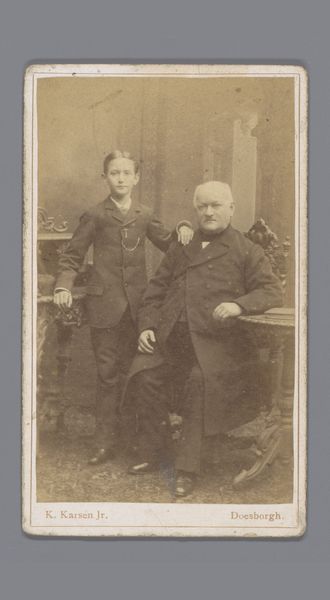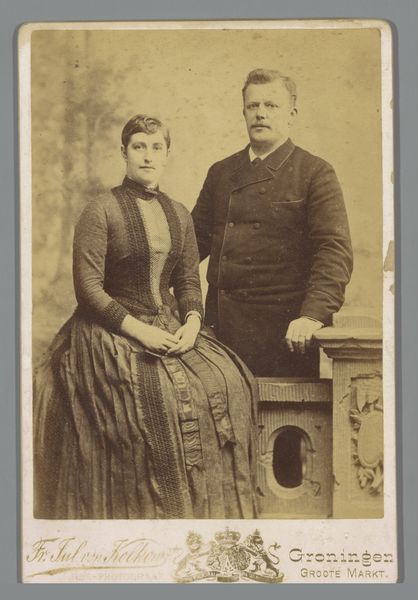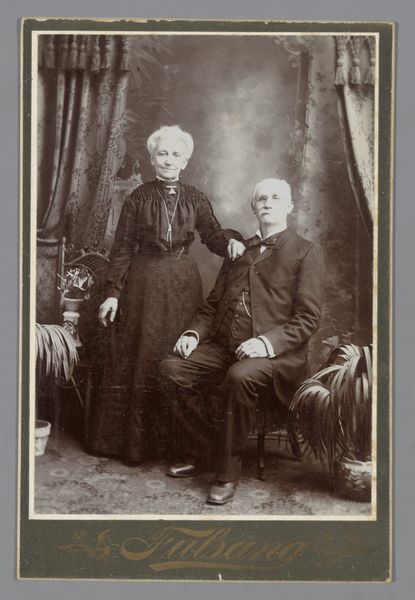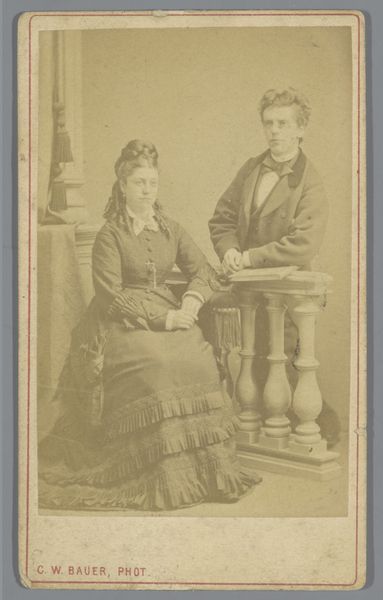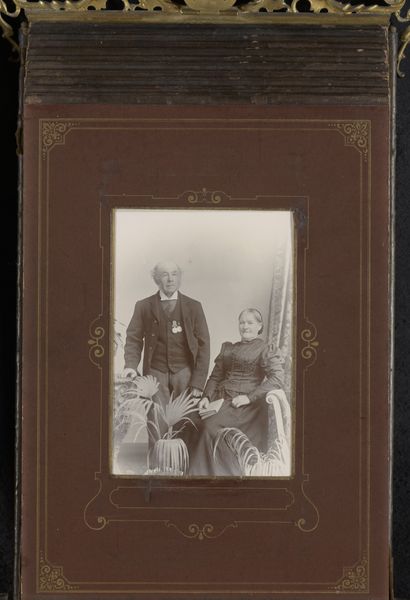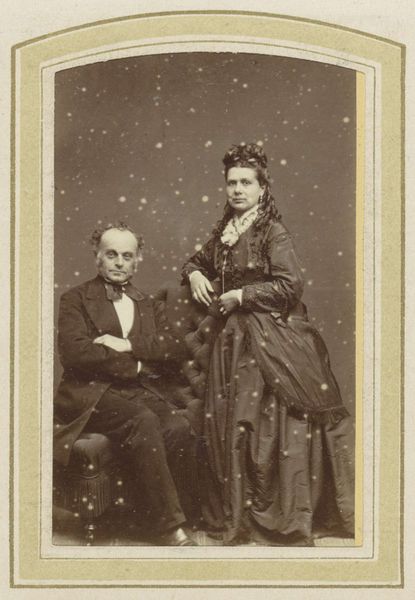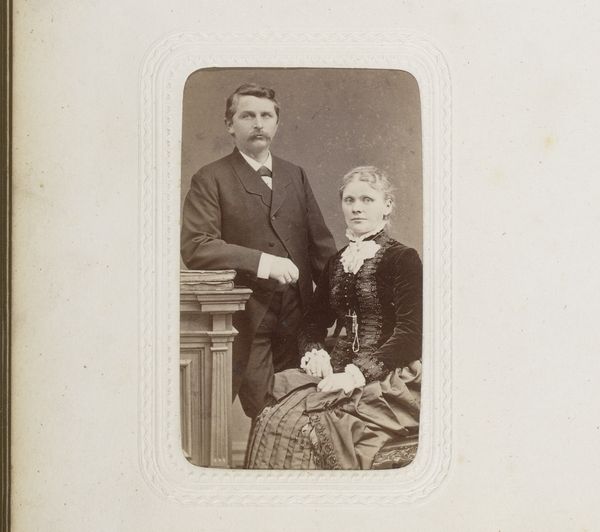
daguerreotype, photography
#
portrait
#
daguerreotype
#
photography
#
historical photography
#
19th century
#
genre-painting
Dimensions: height 83 mm, width 53 mm
Copyright: Rijks Museum: Open Domain
Curator: Looking at this image, I feel a real stillness, a kind of preserved moment in time, like we are peeking into their very ordinary day. Editor: Indeed, this daguerreotype, "Portret van een man en een vrouw," likely taken between 1863 and 1900 by Abraham Koorenhoff, presents a striking example of 19th-century portrait photography. Note how the subjects are positioned: the man stands formally, while the woman is seated, partially turned, leaning against a small table. It’s almost as if we're encountering them in the midst of a longer narrative. Curator: You’re right about the narrative feel. It feels more like a glimpse of a life rather than just a formal pose. The way their eyes avoid direct contact with the lens gives them a wonderfully human quality. There is this aura of seriousness or reserved emotion around the pair, what do you see that creates it? Editor: The key, perhaps, lies in the materiality itself. Daguerreotypes, due to their long exposure times, often compelled subjects to adopt a solemn demeanor. Look closely, though: there are nuances within this forced stillness. The softness of the woman’s gaze, for example. Also the way her dress falls around her makes her part of a fashionable display, with every pleat having significance, which seems to have become a key to a new kind of photographic literacy. Curator: Absolutely. The texture of her dress, rendered in incredible detail, is amazing. Do you think it might have been her favourite outfit? It would have taken her so long to dress up! That brings us to wonder, who were these people and what was the significance of that moment? Editor: What's captivating is the ambiguity the photograph leaves us with. The muted tones and the lack of background detail strip away the immediate context, allowing for open interpretation and letting us create our own world in this image. The way they are framed as individuals within their society adds depth to their presence, and allows us as an audience to consider all kinds of meaning. Curator: It is indeed beautiful to feel like a moment captured in the late 19th century has been returned to life with our reflections, isn't it? Editor: It seems like the careful composure allows the photograph to hold and carry personal narrative of its subjects.
Comments
No comments
Be the first to comment and join the conversation on the ultimate creative platform.
